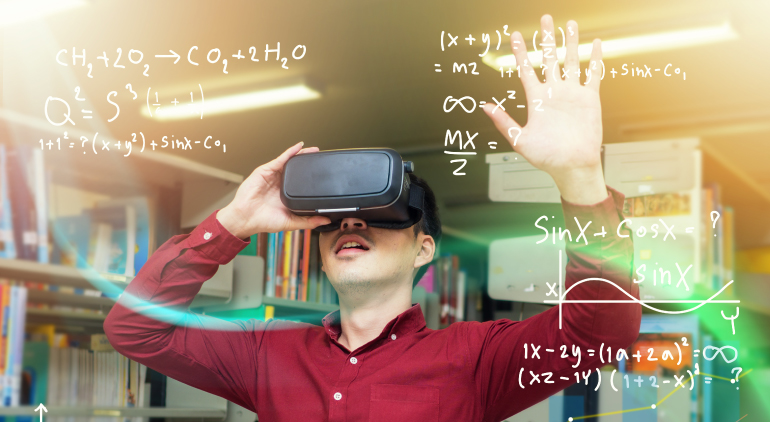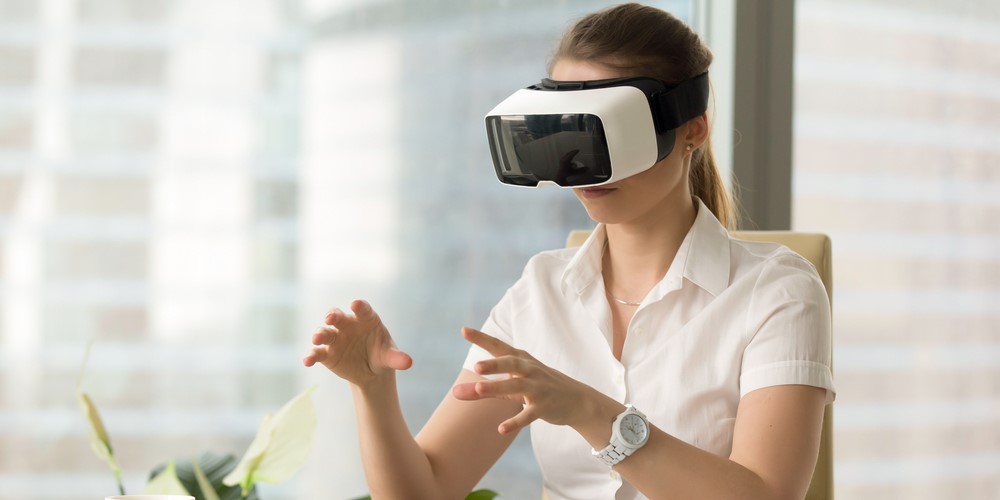Build Higher Learning Capacity with Immersive Learning for Higher Education

Before divining into the wonders of immersive learning, let’s see what exactly is Immersive Learning?
Theory
In the traditional style of teaching, the lecture approach prevails. The teacher writes on the board or shows an AV and lectures while students write down and listen.
- Basically, it focuses on the auditory and textual or written learning style.
Modern educationists have confirmed that this model is no longer relevant.
Why?
That's because educational systems worldwide have started to understand that every learner is different and has unique learning needs.
- The learning graph depends on how a learner absorbs, processes and retains information.
By and large, learners who could not perform under the one size for all system were discredited despite being talented. Generally, they are labelled as slow learners, not capable of getting good grades and hence they too would get demoralized and struggle even more.
Individualization and student-centric learning policies are now gaining traction over one shoe fits all teaching methods. For some, the auditory works just fine, while some learners hugely benefit from a visual and kinesthetic learning style.
From this observation came the model of Immersive Learning for higher education.
Technologies Powering Immersive Learning
Merriam Webster defines Immersion as being deeply absorbed or immersed in an activity or environment.
Hence, it means being entirely focused on the activity. However, that happens when one is interested, right?
The higher the interest level, the higher the absorption.
So to capture the learner’s interest, the immersive learning model provides engaging experiences.
Immersive teaching methods in Higher Education have been proven to augment skills and knowledge through digital environments.
Immersive learning utilizes technology to create the environment, fostering a more engaging and interactive educational experience for students. These are highly specialized, simulated and augmented environments similar to the physical worlds.
Augmented & Virtual Reality: The Future of Immersive Learning Environments
Virtual Reality and Augmented Reality have taken the world by storm. Earlier confined to the realms of science education fiction, these technologies have now seeped into every industry segment. And the education sector is not lagging in adopting it.
The education domain has seen the benefits that VR learning is offering.
• Why else would the VR-driven Ed-tech market be projected as a $13,098.2 million one by 2026 and the AR one to reach $ 97.76 billion by 2028?
VR-AR enabled Immersive Learning for Higher Education offers virtual hands-on training. This trend is revolutionizing the dynamics of knowledge acquisition and skill enhancement, including upskilling.
With VR immersive learning, the method shifts to becoming a student-centric one. This can positively impact a student's learning capability, performance and future skill sets.
Let’s explain with an example:
Medical students need to understand the anatomy of the heart.
As per the earlier method, they would learn from teachers in the classroom using 2D depictions, which would just display the various parts and functions.
But now, with VR, a student can see, feel, and hear the heartbeats!!
They can enter a virtual human body, view the heart upfront in 3D, and understand every minute detail.
Virtual Reality Labs offer an incredible immersive technology in college. Students can learn anywhere, anytime. Moreover, the added benefits include a risk-free and cost-effective training zone.
This is a great advantage in training and upskilling for critical and hazardous jobs. It allows for repeated experiments, training practice, and mentor and peer networking. Immersive Learning for Higher Education truly builds up key skills and allows proficient upskilling as well.
Multiple Benefits of Immersive Learning In Education
✔️ Promotes Critical and Non-Linear Thinking
Immersive learning is a proven scientific way to boost learning capacities and outcomes. And Mixed Reality tools offer precisely interactive and immersive learning environments for better results.
It offers a holistic approach and encourages critical thinking. It enhances critical thinking through self-paced learning. Students working on an issue will have many probable solutions; as their actions could raise multiple probabilities.
They will have to consider them and deduce the most suitable outcome. Students try to figure out for themselves the steps to be taken. Textbooks help them understand the fundamentals, but they can navigate the situation hands-on in this scenario, at zero risk.
This forms the basis of critical thinking, an essential skill for the 21st-century education model.

Get the App from Meta Store: Download Now
✔️ Skill Enhancement
As mentioned earlier, immersive learning for higher education encourages learners to don a thinking cap, go through multiple scenarios, and arrive at the most appropriate one. This method increases their knowledge base and allows them to experiment with new skills.
It promotes learning by practice method. And as neuroscience substantiates this, it is one of the best methods to learn deeper and better. Its impact is revolutionary in practice-based education, where outcomes are tied to the practitioner's skills.
✔️ Cost-Effective
Immersive teaching methods in Higher Education, such as Augmented Reality (AR) and Virtual Reality (VR), are excellent cost-saving tools as they are cheaper than the costs of setting up physical laboratories and sourcing material and equipment for them.
In addition, deeper learning is a by-product of this immersive approach, enhancing the educational experience for students.Since no physical or time constraints are causing recurring expenses, students can practice for hours to master a skill.
To wrap up…
immersive Learning for Higher Education is a catalyst in promoting a lifelong love for learning. Students are mesmerized by its powerful capabilities, as they enjoy the learning process.
Wouldn't you too if you could land on Mars to study it, rather than watch a boring documentary about it?
This technology promotes learner-centric solutions. In traditional classrooms, learners are often forced to adapt to methods and speeds which do not suit their individual needs.
Immersive learning can be personalized to suit individual learning needs. This enables better outcomes and ensures that talented students do not lose out on the system.
However, it does not imply that physical classes are not required. They are integral to learning and forming connections between mentors, students and peers.
However, even this need can suffice by creating a virtual metaverse of learning where there are classes and institutes like real world. This will help create content and an environment that facilitates scientific thinking.
iXR Labs is working in the space of developing powered immersive learning VR solutions for higher education. Visit www.ixrlabs.com and understand in-depth how our solutions create positive impacts for learners, institutes and society.
.png)
.png)



